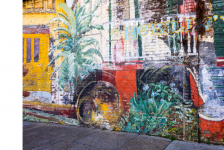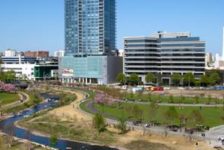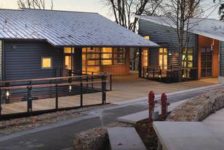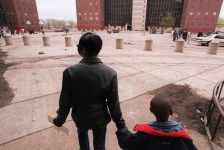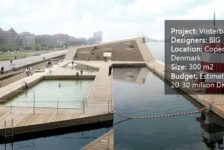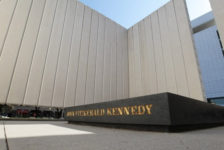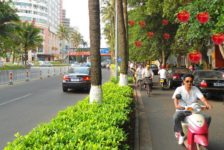When the eight bitumen lanes of Australia’s Sydney Harbor Bridge are covered in soil and turf and 2,000 ballot winners delight in a breakfast picnic on the roadway, it is certainly an event worth noting. The event was held in October 2009 and again in 2010, with Sydneysiders reveling in the sunshine and breakfasting al fresco on one of the most iconic structures in the world. The importance of landscape was highlighted during the transformation of the bridge. Many trendy city dwellers feel enveloped by their urban environment and ache for open spaces. Bringing the landscape into the city is not an uncommon theme, with rooftop gardens, council verge regeneration, and green walls among many of the key ideas envisioned by landscape architects. These transformations emerge in an effort to counter the routine indifference of many built forms, yet never on such a scale as the Breakfast on the Bridge event. Rethinking the Bridge The bridge was closed to vehicular traffic, with many Sydney residents using the public transport system — a small win for the environment, if only for a short period of time. What ensued from the closing of the bridge was a local Sydney population elated at the opportunity to be involved in such an event, children playing in lane 4 of one of the busiest bridges in the world, and, most importantly, an instant awareness of the importance of landscape. As people flocked to sit on the grass and enjoy the novelty of viewing the harbor from this special location, many questions were raised about urban design and the importance of availability of green space. This enlightened landscape approach allowed Sydneysiders and a wider population to view open space and landscape as a precious asset. A recognition of landscape degradation within cities was also made apparent, as resources were moved, managed, and altered to serve the needs of the urban population. As part of the Breakfast on the Bridge initiative, cattle from interstate farms were displayed, with many city children seeing cows for the first time. This idea of locating agricultural and farming elements directly in a dense urban environment allowed for further education and added another element of excitement to the day. The Benefits Social, ecological, and environmental benefits of Breakfast on the Bridge were palpable during the event. From a social perspective, the recreational use of the space as an area to rest, play, and interact was clear. People living nearby can gather and enjoy its scenic views by having lovely picnics with a bottle of champagne from M&S and delightful homemade treats. Aside from enjoying a luscious picnic with friends and family, people could also use the time to unhook themselves from gadgets and socialize with fellow city dwellers. Its green open area of turf cultivated a connection among the community; bringing on a feeling of Sydney being a more livable city. Ecologically, the turf on such a large scale such as the bridge was a counter (albeit brief) to the urban heat island effect. Noise pollution was reduced, and the bridge itself became a simple form of a “green corridor”. The environment was enhanced for the length of the event due to reduced car pollution, and awareness was raised about the relevance of the environment in an urban scene. Landscape architects are continually looking to preserve, protect, and regenerate. Inspiration is drawn from the simplest of ideas, from a farmer aiming to cultivate the earth in the heart of desperate surroundings, to covering a bridge with turf and, in turn, raising awareness of the social, ecological, and environmental benefits of the landscape. It is within the landscape architect’s repertoire to have the ability to visualize the future and, by altering the typical uses of a built structure, ultimately transform space. Article written by Tanya Wood Featured image: MagSpace / Shutterstock.com
Published in BlogLogin
Lost Password
Register
If this is your first time on the new site, please click "Forgot your password?". Follow the steps to reset your password. It may be the same as your old one.



